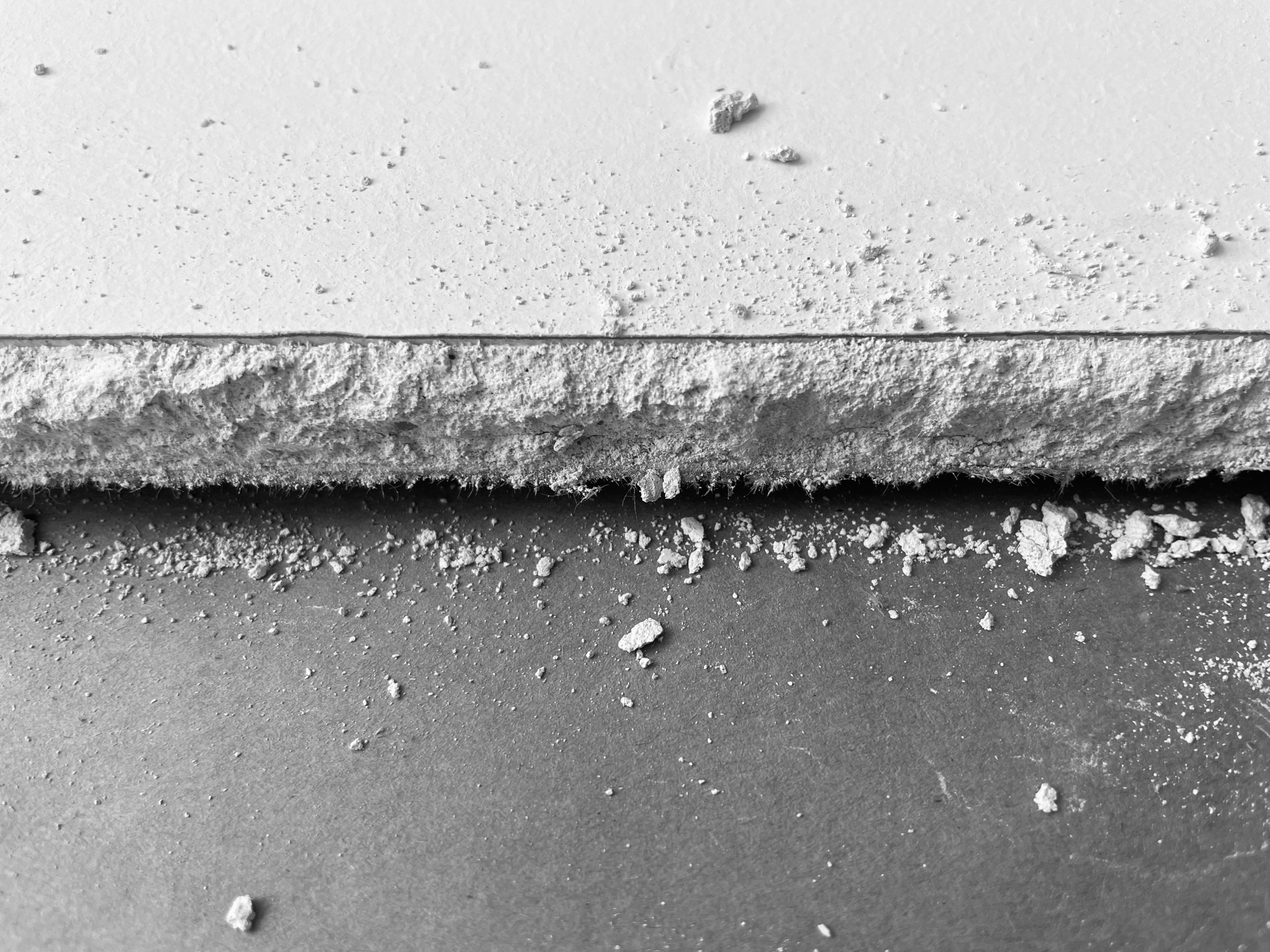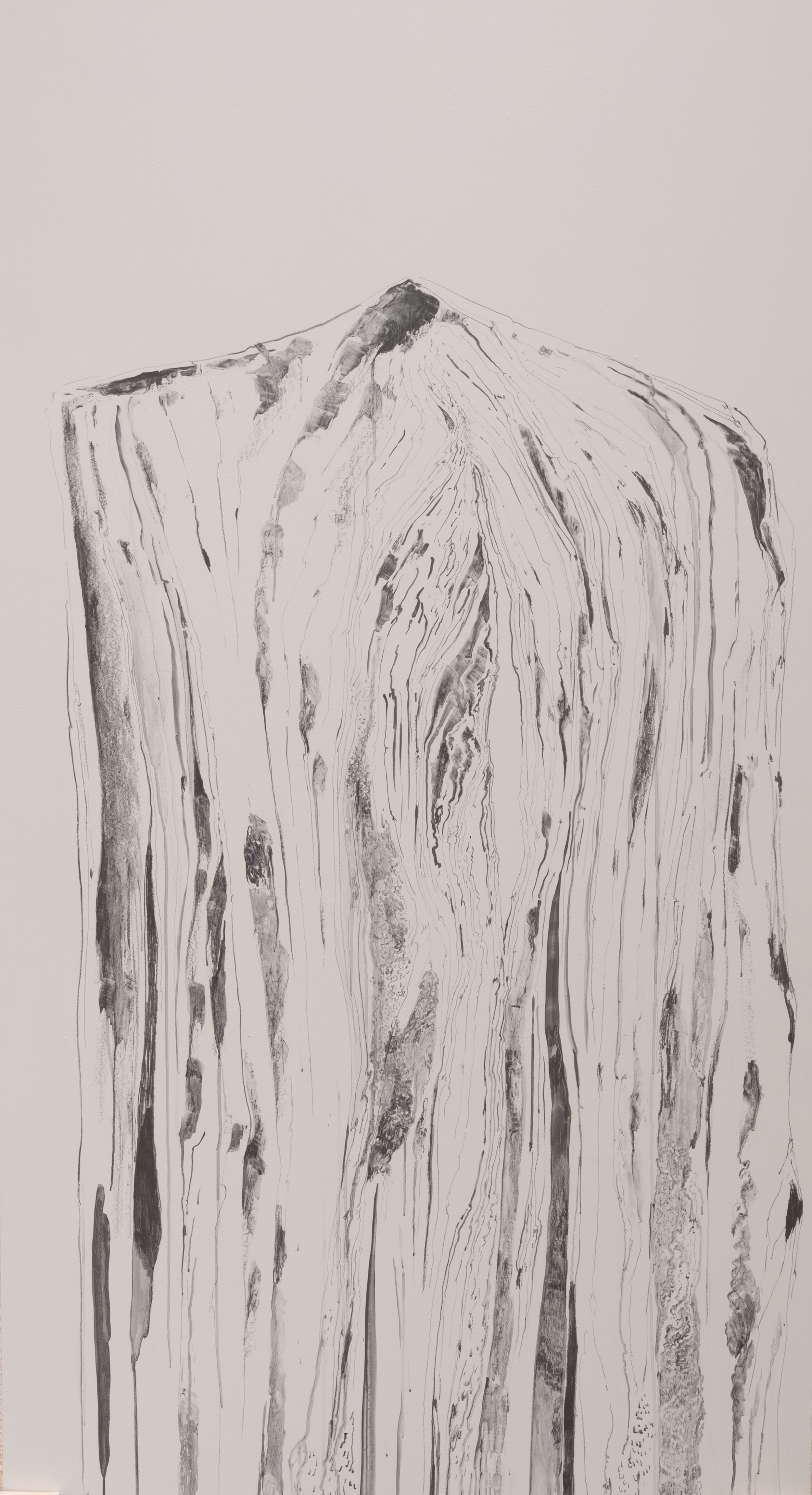sentimentary formations
graphite on gypsum panel, 244 x 122 x 6 cm each, a set of 5
2024
This set of work was held at the Morris and Helen Belkin Art Gallery, as part of Aqueous Nerve: Master of Fine Art Graduate Exhibition 2024.
As I rethink the relationship between my body and the earth, human and non-human entities, I realise how my perception of the inherent fragility of human consciousness intersects with the processes of drawing. This medium allows me to resist homogenous time and instead experience it within and outside my body through the gestures of mark-making as a mediator. Each trace I draw is a sediment, archiving my gestures and continuously forming the stratigraphic layers of my drawings. I perceive sediments as rock fragments or metaphors for the insignificant traces and memories accumulated through our embodied living experiences. As a being, I have magnetite rocks growing in my head, hematite flowing in my blood, carbonates in my bones, and crystalline geodes in my kidneys. I am, in a way, becoming a rock fragment, too.
Installation view, photo courtesy Michael R. Barrick
Excerpt from essay written by Tim McCall <Sedimentality>
Central to Law’s practice is the concept of sedimentation – a process wherein layers of memory accumulate and disintegrate, leaving behind traces of meaning while erasing others. As the grain
of sand contains the vector of a melting landscape, the figment of memory contains the vector of a dissolving consciousness. In both, falling apart generates the seeds of sedimentary becoming.
Floodplains, along with some other environments such as salt marshes and sand dunes, can have an excellent archeological “memory”. If memories can be described to flood, in Law’s drawings we see the floodplain, the river that is always tripping over its banks and overturning its course. The flow of sediment obscures as it preserves, covering over as it entombs. Sediments ride the upstream effects of pool and riffle, eddy and current, wave train and thalweg, settling in for a while until the river shifts its course. In the riverbed, artifact and river stone, the thing made by hand and the thing made by water, are both destined for deposition. They are gathered up pellmell, (re)collected and passed off from fluvial transit to the stony geology caretaker. Water passes through stone. The landscape deconstructs itself, and is remade, surfaces eroded down and piled up, hills becoming rivers becoming hills again. Artifact and Naturalia blend into the stratigraphy of a disintegrating landscape. In Law’s practice, drawing becomes a medium of deconstruction – a process wherein memories are dug up, examined, and rethought in the evershifting landscape of human consciousness. Each trace of the pencil, each layer of graphite, becomes a testament to the elusive nature of memory and the inherent instability of truth. Drawing becomes a plain of contradictions, a space where certainties dissolve and new senses of reality emerge. Look again.
READ FULL ESSAY HERE










